Noticed few tourists walking in Kimono, I asked my guide where to rent it. He said he'll tell me later when we walked to Kiyomizu Temple, but...

OMG! It's impossible to breakthrough the crowd and ask him
the direction after everyone gathered after lunch. ㅠㅠ
the direction after everyone gathered after lunch. ㅠㅠ
But, we somehow saw this mannequin in Kimono
and black board written in Japanese, but
"1 day Rental" obviously refer to Kimono rental~^^
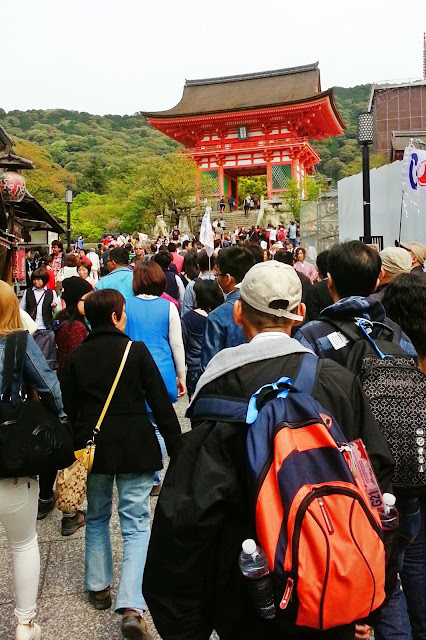
We'd to follow to the temple so that we can get the tickets to
the temple from our guide.
After letting our guide know that we'll be joining the group later
after renting Kimono, we rushed back to Okamoto Kimono rental store.
Kimono Full Scale Attire - 5,000 Yen (SGD 55.00)
For 'Set' plan, the staff will choose the Kimono for you, I might not like the color or pattern. And 'Select' plan is simple kimono without undershirt and obi accessories. So, I opted for most popular 'Full-scale Attire' plan.

Kinda hard to choose from 600 folded kimonos,
which you can see small part of the patterns.
As time constraint, I just quickly grabbed one Kimono with floral patterns as it's spring, Juban (under-robe) and Obi ( おび = sash). Then, I was asked to go dressing room upstairs and my hubby had to wait at the garden.
There were other guests inside, so had to wait awhile. Finally, the staff handed me white wide undersash, white Tabi socks and big bag to put all my belongings . She asked me to undress and put on undersash, then wear the socks as it'll be difficult to put them on after wearing tight kimono robes.
After that, 2 staffs assisted me to put on Juban robe, tied it with Koshi Himo ribbon (Koshi = waist, Himo = cord). It's also called "Koshi-obi" or "Shita-jime".
To ensure collar shape not shifting, they secured it with Datejime (sash) before dress me with the main Kimono. Then they adjusted the length, folded the balance around the tummy, and again fasten it with Koshi Himo belt.
OMG! It's so complicated, which I think it's impossible to wear it yourself especially the final artistic touch... tying Obi sash!
Additional 1,000 Yen for updo hairstyle.
Finally after about 30 minutes including waiting and hairdo, quickly went downstairs as hubby non-stop messaging to remind me that I only left half and hour to walk around.
You can use kimono sleeves (Tamoto) to store small items or slip it between Kimono robe.
You can use drawstring bag (Kinchaku) too as Kimono does not have pocket.
You can use drawstring bag (Kinchaku) too as Kimono does not have pocket.
Before stepped out, the staff asked me to choose a handbag to put valuable things such as wallet and hp. Then you can leave other items in the big bag with them after you wrote your name and tag to it.
I think it's better to fly with my Obi wings :P
I think it's already impossible to walk wearing this tight Kimono. Sweating just imagine myself balancing on wooden base elevated teeth traditional Japanese clogs (Geta) and walking in difficulty and eventually trip down? NO!!!
Phew~!^^ Okamoto provided flip flop designed similar to Geta
but it's made of comfortable rubber sole instead of slippery wood.
Kimono is Japanese traditional clothes back in the Muromachi period (1392-1568).
The word Kimono (きもの) actually means a "thing to wear" (ki = wear, mono = thing).

The word Kimono (きもの) actually means a "thing to wear" (ki = wear, mono = thing).

Yukata is casual kimono made of cotton. Yukata became very popular
during Edo period there were strict laws that prevented people from
living extravagantly, as it's much cheaper than silk kimono.

during Edo period there were strict laws that prevented people from
living extravagantly, as it's much cheaper than silk kimono.

Yukatas traditionally worn in the summer.
Japanese guest houses (Ryokan) usually provide Yukata which you can wear as nightgown and bathrobe and even when having meals or at all times during your stay. It is also common to see guests strolling around their Yukata and Geta around onsen area.
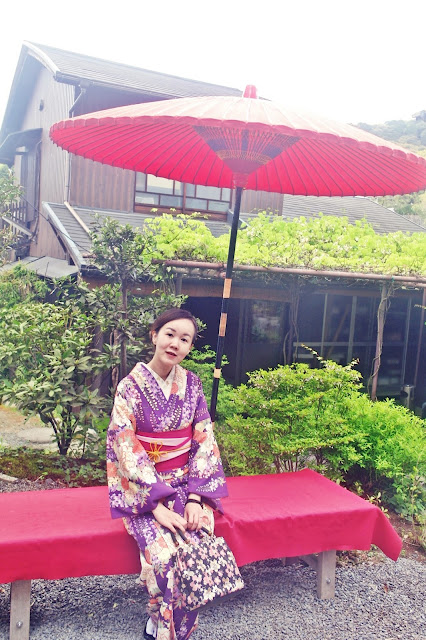
A kimono consists of twelve or more parts and many specific rules,
which made it complicated and extremely dressy garment to wear.
One of the important rules (Kitsuke) to wear Kimono or Yukata is to wrap left panel over right. It's the same application for man and woman. The only exception is for dressing corpse at funerals. To easy remember it, the left panel on top allowing your right hand to slot inside your kimono.

Japanese people normally only wear Kimono on special occasions.
Wearing Kimono would be equivalent of wearing a formal dress.

Obi is worn high to create illusion of longer legs silhouette.
Straight-line-cut kimono is suitable for all weather.
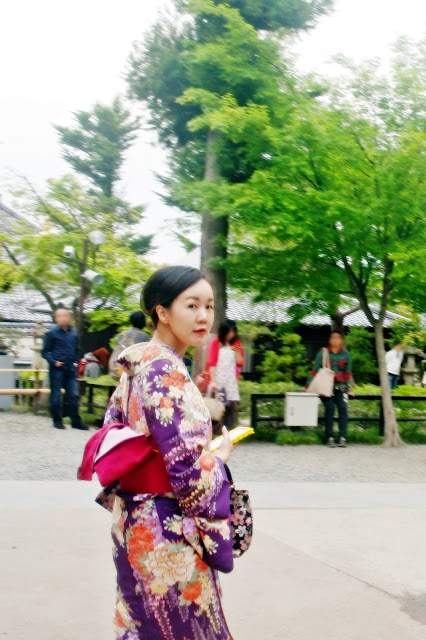
Kimono is covering the whole body of the wearer.
Therefore, I think this standing straight and crisp collars give elegance yet sexy nuances by showing a bit of neck bones. Do you think so?
Amazed on how they set the collar of Kimono and Juban with some gap at the back of the neck, and not dropping or causing opening of the cross-collared robes. Cool~!

Kimono usually is quite flexible in length as it's normally longer
than our height.
Wearer to adjust the length by tucking the balance under Obi. It created horizontal line running below obi which is called Ohashori. Wearing Kimono without this Ohashori fold is considered bad Kitsuke.

Taiko Musubi (Drum Bow).
I kinda love this semi-formal Taiko knot which is suitable for married
women. There are few types of knots such as Washikusa musubi, darari,
hanhaba , Chōchō musubi, Fukurasuzume musubi, Tateya musubi, and many
more.

These knots are regulated by unwritten propriety rules.
Generally
the more complex and showy knots are for young unmarried women in
festive situations, the more subdued for married or mature women or for
use in ceremonial situations.
Obi is always different fabric and pattern. It's to complement and contrast
with Kimono. Fine formal obi might cost more than the entire outfit.
Hair ornaments (Kanzashi) are used in traditional Japanese hairstyles.
Some models may have been modified for self-defense.
The collar of Juban is usually white or different color from Kimono.
Mine is white with flowers embroidery matching with
Flower knot orange pure silk decorative string (Obi-jime).



For better walking, it's advised that your heals should extend 2 to 3 cm
hanging over the end of the geta, so it's align to your centre of gravity
directly over the back teeth of the sole. But it's alright too if your feet
fits geta perfectly.

It's fantastic and fun experience of dressing up in Kimono
stroll in slow rhythm enjoying the rustic charm of ancient city Kyoto.
hanging over the end of the geta, so it's align to your centre of gravity
directly over the back teeth of the sole. But it's alright too if your feet
fits geta perfectly.

It's fantastic and fun experience of dressing up in Kimono
stroll in slow rhythm enjoying the rustic charm of ancient city Kyoto.

Maybe next time I'll have complete makeover! Paint my face in white, wear
long sleeves kimono (furisode), then transform myself to Geiko or Maiko. LOL!

What about 12 layered robe?

Ok, see you later at Kiyomizu Temple.
long sleeves kimono (furisode), then transform myself to Geiko or Maiko. LOL!

What about 12 layered robe?
Junihitoe is twelve layered robe worn by the high-ranked ladies of the Imperial Court such as empress and princess during Heian
period. Keiko for more casual and lightweight version.
I like Junihitoe as it's like displaying art on the wearer's body to arrange the colors and patterns layer by layer. So beautiful, but putting Kimono took about 30 minutes... what about dressing 12 robes? it might take 2-3 hours?
Seriously... now I really wonder how they walk around wearing those robes, which it said could easily weighted to 20 kg. I think it'll break my backbones and legs just to stand up!

Ok, see you later at Kiyomizu Temple.
Actually, the rental fee is for 1 day and you can return it at your hotel in Kyoto. But after Kiyomizu, we're heading to Osaka. So, I only had about 20 minutes for outdoor photoshoots, as I'd to go back to the shop to return the kimono and get my belongings.
Actually instead of strolling, I was like crazy woman sprinting all the way to the top of Kiyomizu Temple and back. I perspired a lot though the weather was cold. It's kinda unbelievable wearing tight, thick kimono and geta, maybe I broke the world's record! :P

Reservation: kiyomizuzaka@okamoto-kimono.com
Tel: 075-525-7115
Add: 2-237-1-1 Kiyomizu, Higashiyama-ku, Kyoto-shi, 〒605-0862
Operating hours: Daily 9:00 - 20:00
Related Posts:

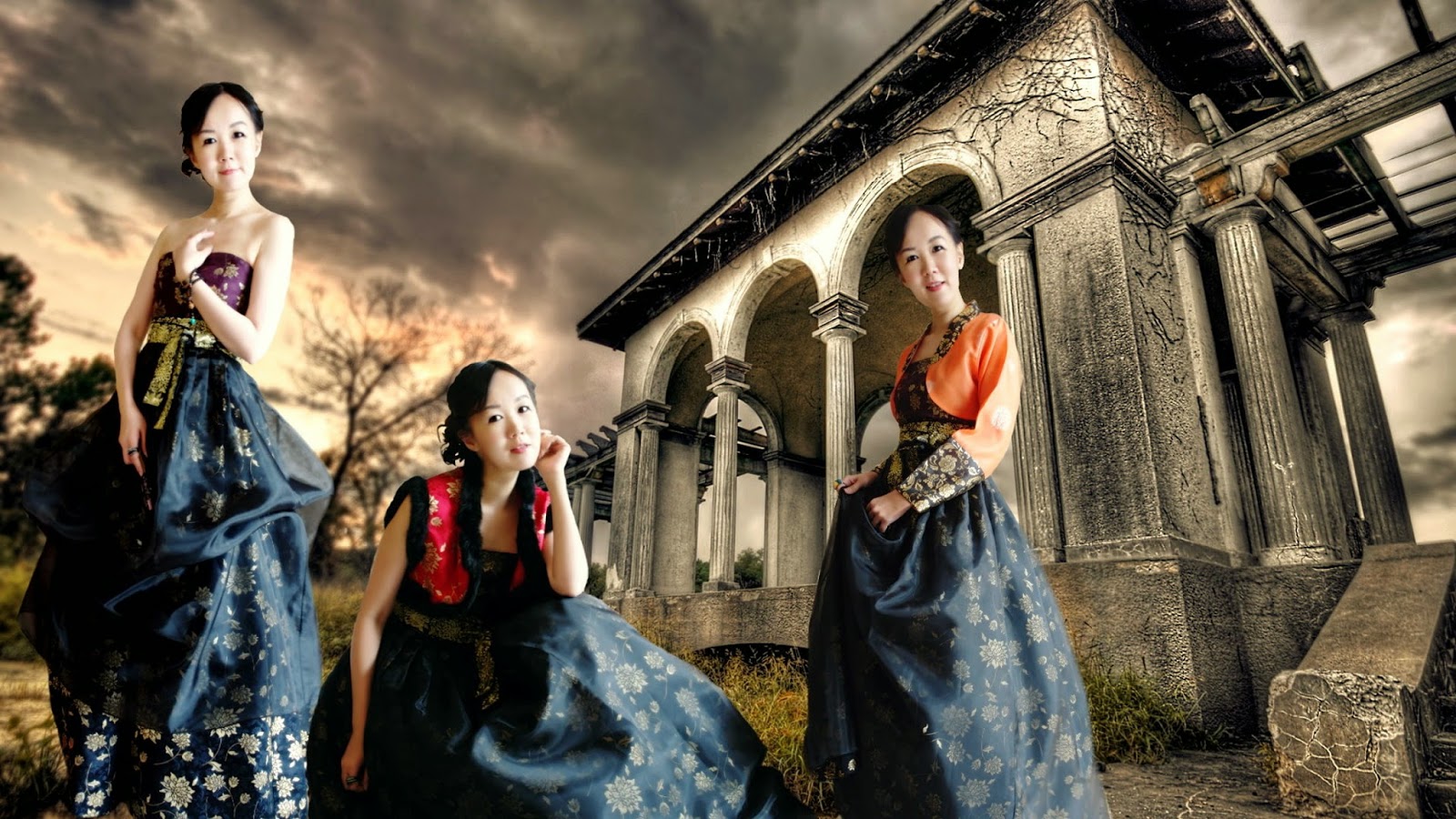


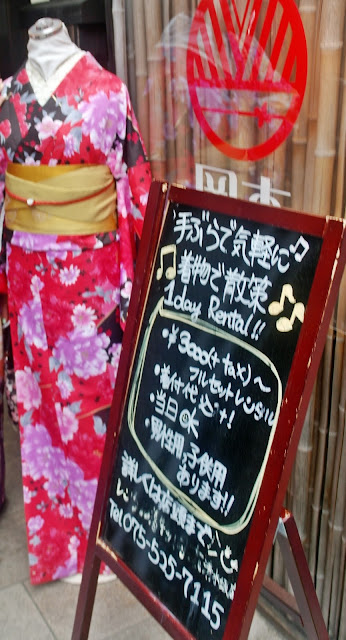






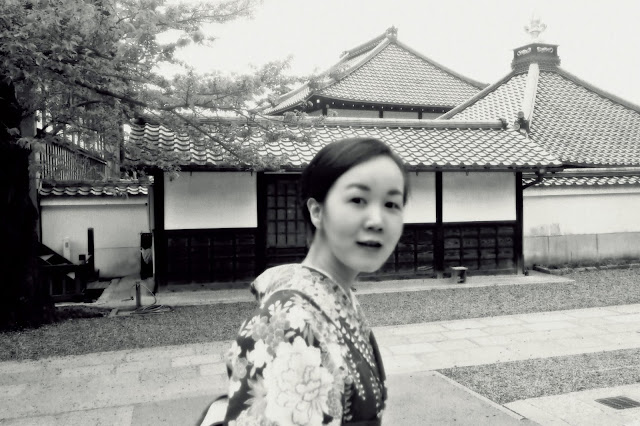



.JPG)

No comments:
Post a Comment